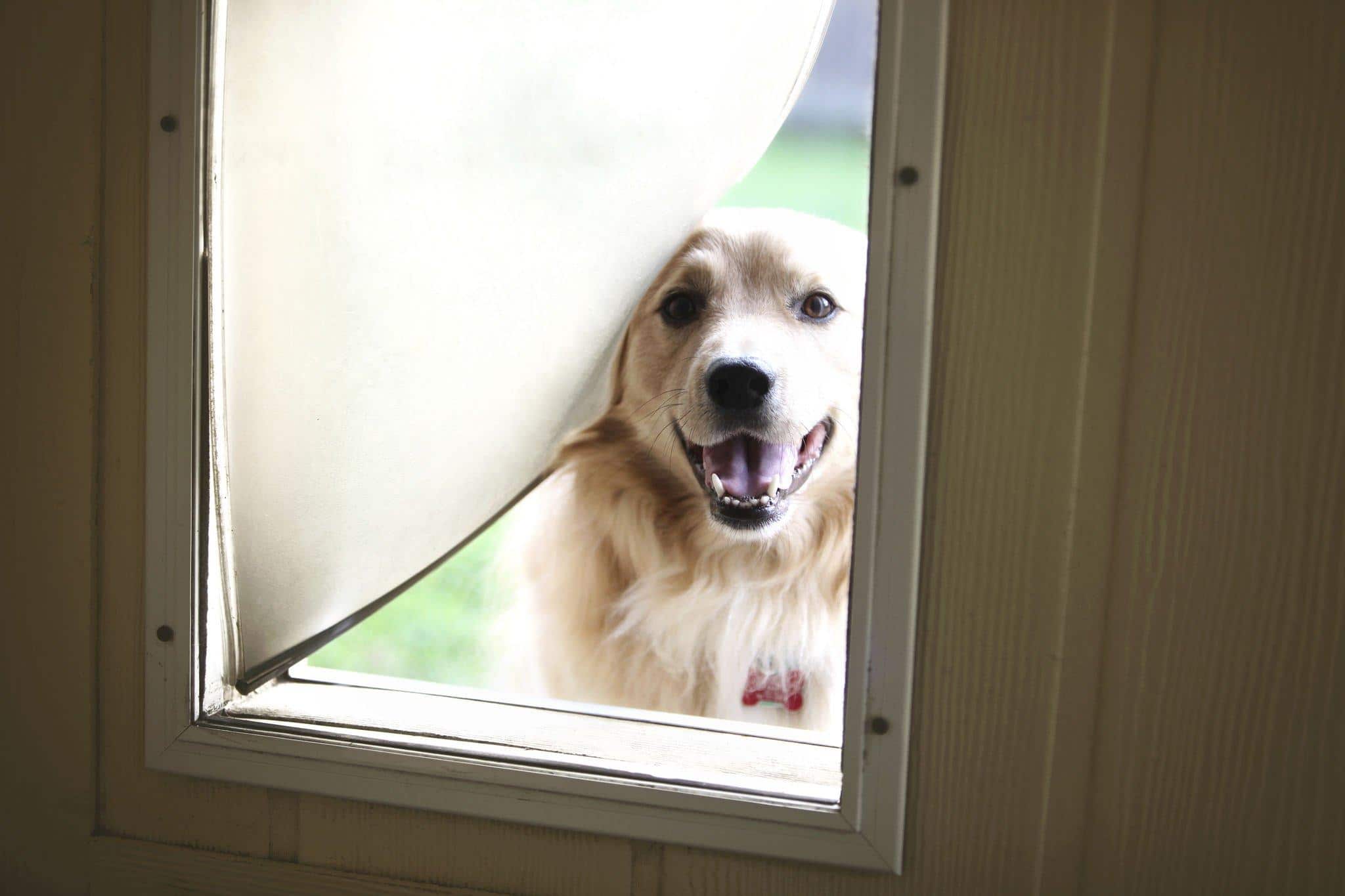Train Your Pooch to Use a Dog Door Gain independence with effective training to help your dog easily come and go with a doggy door. Covering step by step how to teach your dog to properly use their dog door with or without a bell. Giving confidence to navigate their door flaps while keeping outdoor dangers in mind.
Introduce Your Pooch to the Door
Introducing your dog to the door should be a positive and gradual process. Start by letting them freely explore and sniff the door. Use treats or toys to create a positive association. When your dog is comfortable, gently open the door and encourage them to go through, rewarding them with praise and treats. Repeat this, gradually increasing the time the door stays open until your dog feels confident. Be patient and use positive reinforcement to make it a positive experience.
Gradually Increasing the Difficulty Level
Once your dog has mastered the concept of pushing the door open, it’s time to gradually increase the difficulty level. You can do this by slightly closing the door or adding resistance to the flap. This will make it slightly more challenging for your dog to push the door open. Be patient and provide positive reinforcement when they successfully navigate the obstacle.
Guide Your Dog With Rewards and Consistent Praise
Positive reinforcement is key when teaching your dog to use the dog door. Begin by rewarding your pooch each time they approach the extra flap on the dog door, but remember to be consistent with your praises! Your dog will learn to associate the door with praise and rewards, making it a more enjoyable experience for both of you.
Avoid Forced Acquaintance
Dogs take their time when it comes to trying new things, and it’s crucial not to push them. Forcing them to go through the dog door can be traumatizing, making it difficult for them to use the door in the future. So, keep things positive and enjoyable throughout the process.
Enjoying the Benefits of a Dog Who Can Independently Use a Dog Door
By following these step-by-step training processes, you can help your pooch gain the skills and confidence to use a dog door. Remember to be patient and consistent throughout the training process. With time and practice, your dog will become comfortable with using their dog door and enjoy the freedom it provides. Embrace the benefits of having an independent dog who can come and go as they please through their very own doggy door.
Should I use a leash during training?
Yes, using a leash can provide guidance and prevent your dog from feeling overwhelmed. Attach the leash to your dog’s collar and gently guide them through the door as you provide treats and praise.
How to Train Your Dog to Use a Doggie Door?
1. Introduce the door slowly: Help your dog get familiar with the doggie door step by step.
2. Use incentives: Use treats or toys to encourage your dog to approach and use the door.
3. Reward success: When your dog successfully uses the door, reward them with praise or another treat.
4. Stay consistent: Provide consistent positive reinforcement to reinforce the behavior and encourage your dog to continue using the door.
How can you ensure that only your dog uses the doggie door?
By training your dog, gradually introduce the doggie door, use rewards to entice them, and reinforce their successful use.
What can I do to get my dog to use the doggy door?
If your dog is apprehensive about using the dog door, there could be factors like fear or uncertainty at play. However, don’t worry! You can help them overcome this with patience, positive reinforcement, and gradual training.
How can I desensitize my dog to the door?
Want to help your dog overcome their fear of the door? Follow these steps to create positive associations and boost their confidence level over time.
Conclusion
Teach your pooch to use the dog door like a pro with consistency, patience, and positive reinforcement. Stay persistent with practice and rewards, and soon your furry friend will be running in and out with ease. These tips and tricks will not only improve your companion’s quality of life but also bring you added comfort. So, go ahead and enjoy the freedom that comes with an efficiently trained pooch.
